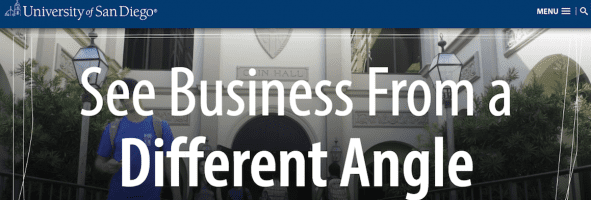Financing Your MBA, Part I

As more and more of you are receiving your admissions results from all your hard work during the MBA application process, we wanted to turn our attention to how you’ll manage financing your MBA.
If you’ve got a spare couple hundred thousand dollars in your bank account, then you can probably skip this series. For everyone else, read on. In this post and a handful to follow, we’ll provide a broad overview of the various costs a typical MBA student faces and the types of funding opportunities currently available. Down the line, we’ll take a closer look at the financial aid processes at a diverse range of leading business schools, giving you the tools you need to assess MBA programs in light of both your own goals and available financing options.
If you’re just beginning to think about an MBA, this series can help map out the landscape, outlining the financial aid process and resources available at various programs. You can extend your research by consulting the Clear Admit School Guides and schools’ own websites, as well as through conversations with current students.
First Things First: What’s an MBA Going to Cost?
The first step in financing the MBA is getting a handle on how much it will cost. The primary expense of an MBA program is tuition. Having said that, there are a variety of other costs—including living expenses, course materials and additional fees—that can increase the total amount a student pays by a half again. Most business schools provide a breakdown of the expenses, which are posted under the financial aid or admissions section of their websites in order to help prospective students seriously consider the cost of completing a particular MBA program. Schools typically take the total cost of attendance into account when calculating the financial aid package students receive.
Tuition
Tuition at the top business programs has risen steadily for decades, often at a rate above inflation. Students can now expect to pay between $50,000 and $75,000 for a single year’s tuition at a top school, with an average total price tag of $130,000 for tuition alone. Public universities, which discount tuition for state residents, can sometimes be more affordable. For instance, in-state residents attending schools such as UT Austin’s McCombs and UNC’s Kenan-Flagler pay about $15,000 less in tuition each year than do out-of-state residents. The range of variance of costs that in-state residents pay can be explained in part by the different levels of subsidies that public universities receive and the economies of the states in which they are located.
Living Costs
The cost of living also forms a substantial part of a student’s expenses while at business school. These costs typically cover housing, food, utilities and other personal expenses, and they can vary widely by geographic region. For example, the Fuqua School of Business, located in the college town of Durham, North Carolina, estimates that students will pay $12,800 for room and board in their first year. Meanwhile, at NYU Stern, located in the center of Manhattan in New York City, the estimated cost for room and board is $25,170.
Living costs are usually based on surveys of the student population or estimates of local rental costs. Students should keep in mind that the figures posted by most schools are for single students with no dependents; those with partners or children should take into account the additional expenses of balancing family life with full-time studies. Harvard Business School, for instance, estimates that students with a spouse or partner should set aside an additional $16,900 in yearly expenses for a spouse or partner, another $13,100 for one child and an additional $8,500 for a second child. Meanwhile, Tuck, with its rural New Hampshire campus, calculates that $7,500 should be set aside for each additional family member. Prospective students with further questions may contact their target programs’ financial aid offices in order to request information about expected family expenses.
Additional Expenses and Fees
Course materials, healthcare insurance, transportation costs and other mandatory university fees can add several thousand dollars to a student’s expenses each year. For example, Wharton’s Pre-term fee is $2,000. Furthermore, extracurricular activities, particularly international trips that are often a highlight of an MBA experience, can substantially increase costs; for example, the Kellogg Worldwide Experience and Service Trips (KWEST) run into the thousands before considering a number of additional out-of-pocket expenses. To help cover these expenses, some schools allow students to apply for an increase to their cost of attendance and thereby take on more loans.
Loan Interest
Because recent legislature has rendered federally subsidized loans unavailable for U.S. citizens or permanent residents in graduate school, students relying on loans to fund their studies will see their interest accumulate while in business school. For the most part, students do not have to start paying that interest, or the principle, until several months after they graduate. Federal loans and some private loans also include an ordination fee that is tacked on to each loan disbursement. We’ll go into greater detail on loans in a later post in this series.
Stay tuned for future posts in this series, where we’ll take a closer look at the range of financing options available to MBA students—including school-based financial aid, private scholarships and loan programs—as well as specific resources for international students.
Take Our Survey & Receive a FREE Resume Guide

Help us improve MetroMBA by taking our new survey!
Continue reading…
Rowan University Opens Massive New Business School Headquarters

In front of a packed crowd of students, staff, alumni and members of the Glassboro, New Jersey, community, Rowan University President Ali A. Houshmand officially opened the new headquarters of the the William G. Rohrer College of Business.
USD Launches New Business School Website

The ease of which you can find and digest information about a potential MBA program is key to helping you make your choice. If a school makes it difficult to locate the program you want and the details you need, then you’re more likely to choose another program. And that’s exactly why the University of San Diego School of Business Administration recently updated its website.
According to a press release from the university, the updated website aims to deliver information to prospective students exploring graduate and undergraduate business degree and career options. And it was designed with users in mind.
“We surveyed prospective undergraduate and graduate students, and later in the project conducted a usability study with our prospective audience to ensure the design and intended usability appealed to their needs,” explained the university.
Some of the features of the new website include:
- Responsive design that works for mobile, tablet and desktop devices, so students can access USD anytime and anywhere.
- A looping video showcase feature that shows the USD campus and school and, in the future, will be used to show videos of inspiring speakers and important announcements and advancements.
- A new “global impact” home page that demonstrates USD’s excellence around the world.
- An updated faculty and staff web page, which has a new filtering feature as well as an ability to search. Each faculty and staff member listing also comes with more research information and larger photos.
- A “study abroad system” for students to quickly and easily see what international options are available based on specific search options.
- A newly updated course catalog, which provides up-to-date course information.
- A new news center, events calendar, and blog site to share information about the school, faculty and related centers.
- A social media hub, which aggregates all of USD’s content from all of its social profiles.
- Finally, all content has been rewritten and edited for optimal readability.
To take a look at the new USD School of Business website, visit it now.
The Best Finance MBA Programs in London

The economy of London is dominated by the financial services industry. In fact, the city is the largest financial exporter in the world and is home to exchanges, banks, brokers, pension funds, reinsurance markets and more. It’s also a notable center of international finance and home to the second oldest central bank in the world: the Bank of England. Other major financial institutions in London include the London Stock Exchange, the London Bullion Market and HSBC.
So, it’s no wonder that London is a top destination for MBAs looking to enter the financial industry. But where should MBAs head to school for their best chance at success post graduation? We’ve outlined our top five Finance MBA programs in London to give you a head start on the process. Continue reading…
Choosing the Right People to Write Your Letters of Recommendation

Letters of recommendation can make or a break your candidacy for anything, whether it be a job or an undergraduate program of study. Continue reading…
